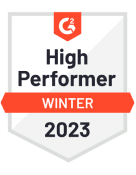Animation in website design does not have to be limited to animator portfolios, however, if you are an animator or a web designer with animation as part of your skillset, then it becomes even more important create and animation website or incorporate your animation skills into your portfolio website in some capacity to not just improve its aesthetic appeal but also as a display of your skillset and what you are capable of.
This article is a deep dive into animation websites and how to make them stand out. We also have some of our top picks for the best animation websites built on Pixpa to inspire you as well as some awesome tips for creating animation websites to help you start out! So, let us dive right in!
Why create an animation website?
If you are an animator or visual designer then your animation portfolio website can be the perfect place for you to display your skills and give visitors a visual example of what they can expect from you. Since your online portfolio website and landing page is the first thing anyone will see when they load your website, this is also a great opportunity to display your talents and create a dynamic, animated visual experience that can stand out. This helps you create an impact almost immediately.
Animation websites don’t need to be incredibly complex and if you decide to include animated elements, they need not be too in your face or elaborate. Whether it is a simple website with micro-animations or complex 3D animation websites, animation can add life to your website. Minor details and micro-animations can help you improve the overall look and user-experience of your website and boost interactivity.
Interactivity in website design can be helpful in reducing bounce rates. Bounce rate is the percentage of users who visit your site and then leave without visiting a second page or engaging further with your website. By adding more interactive, animated elements to your animation portfolio website you can reduce the bounce rate, show off your animation skills and improve the overall user-experience as well the engagement rates of your website. Check out this article on the best websites of 2023 to understand what makes a website truly successful in 2023!
Pixpa can help you in creating a stunning animation website effortlessly. Check out the top 25 reasons why Pixpa is the website builder of choice for artists, designers and creative professionals all around the globe! You can start building a free animation website today with Pixpa’s 15-day full-featured free trial!
Here are our top picks for the Best Animation Websites built on Pixpa!
Grant Davies

Grant Davies website is minimalist and understated but the animated galleries bring it to life. Grant’s website makes use of a clean, uncluttered layout and color blocking to create a truly modern and sleek looking animation portfolio website. The website’s landing focuses more on images than on text which makes it pop without overwhelming the eye. However, each gallery item comes with a text description to ensure coherence and intelligibility.
Studio Fry

Studio Fry is a production house specializing in visualizing and producing marketing content mainly for the food and beverages industry. Much like the content they produce, Studio Fry’s website is vibrant and dynamic. They utilize a bright color palette to bring life to the website. They also incorporate animated banners in order to bring in more kinetic energy and life to the website.
Madalina Mihutoiu

Madalina Mihutoiu’s website is simple and minimalistic but it uses micro-animations to create dynamism, and movement in her landing page. The landing page itself is simple but an excellent example of how animation websites can utilize a single large hero image with micro-animations to create an eye-catching and unique effect.
Tom Schroeder
Tom Schroeder’s website uses warm, earthy tones for the colour palette and a soothing animated banner for the landing page. This gives Tom’s website a welcoming feel. The animation adds movement and life but the energy is different from some of the other examples of animation portfolio websites in this list. Tom’s website gives off a more soothing and down to earth aura which is modern but understated.
Faith K Lefever

Faith K Lefever’s website is evidence that grids never go out of style when it comes to website design. The website does not include animated elements on the landing page. Faith mostly keeps her animations limited to the galleries in her portfolio. Her animations are bright, bold and colorful with a youthful vibrance. This helps her create a cohesive, clutter free animation website.
Gregory Duarte

Gregory Duarte is a freelance motion designer based in Switzerland. Gregory’s landing page makes the use of a grid-style gallery which displays his work in animation including 3D animation and motion graphics. His landing page has the tagline “I can make things move in 2D and 3D” which is a great summation of his work as well as a short pitch for his portfolio. If you have been looking for examples of 3D animation portfolio websites, Gregory’s website is definitely something you should check out!
Maria Maka

Maria Maka’s animation website is a great example of how minimalism and micro animation can be used to create a cohesive, modern and visually stunning website. Maria keeps the overall design of her website simple but incorporates micro animations in areas like the contact form and her portfolio gallery to give her website an extra modern appeal and make it more interesting and attractive.
Robby Baxendale

Robby Baxendale is an animator, storyboarder and character concept artist. His website is focused on functionality. He uses galleries to display his work on the landing page itself. Robby’s website makes excellent use of visual hierarchy and CTAs to create a truly simple but very functional website. He highlights his email at the top of his landing page. With a CTA like ‘Hire me!’ he encourages visitors to take action and hire him for his work.
Stephen Lewis

Stephen Lewis’s animation portfolio website is another great example of why grid layouts work so well for online portfolios. Loading his website we can scroll through his work on his homepage gallery which is organized in an orderly and cohesive fashion. He also uses a handwriting style font which works well and makes sense for his work as an animator working with cartoon shows.
Daniel Duboulay

Daniel Duboulay’s animation website uses vibrant colors and contrast to create an interesting landing page experience. The contrast between the black gallery background and the white landing page creates an impressive effect. Scrolling through the landing page we are greeted with further work in bright colors creating a beautiful experience. The layout is minimalistic, intuitive and easy to navigate which is a big plus for any website.
Sarah Oneschuk

Sarah Oneschuk is a Canadian artist and stop motion animator. If you were looking for examples of minimalist animation websites then Sarah’s website is one that you must check out. The simplicity of the white background, understated grey, lower case font and intriguing main image, creates a simple but poignant combination. Sarah’s strange but affecting stop-motion animations also reflect a similar tone and feel.
Armando Servin

Armando Servin is a graphic designer focused on creating visual identities and experiences across mediums. Armando’s website is unique in that the landing page is more text-focused which makes it stand out. The simple design and intuitive navigation help Armando’s animation website feel functional, practical and efficient for its purpose.
Do check out these 5 tips for creating an awesome animation website:
- Keep in mind the basics
- Don't create clutter
- Micro-interactions can provide interactivity for your website
- Create dynamic landing pages for more impact
- Animated loading screens can help you show off your skills
1. Keep in mind the basics
When it comes to website design in general, it is always a good idea to keep in mind the basics. Use grid layouts, prioritize visual hierarchy and always adhere to good UX practices to make sure that your website is intuitive and easy to navigate.
Sometimes we can let our creativity run wild and while that is good for innovation, it can sometimes hamper usability. Always keep users in mind when creating your websites because UX or user experience is one of the most important basic rules of website design. Visual hierarchy is another basic which means that the most important elements of your website must always be the most prominent element on your web page. For example, in your animation portfolio website, visually highlight the important parts like your portfolio gallery, your name and details etc. Grid layouts are also basic when it comes to web design. As we have already seen in our examples of animation websites, grid layouts can help you create an organized, clutter free animation website.
Here are some of the basic principles of design to help you brush up on some more basic design knowledge when creating your animation website.
2. Don’t create clutter
Less is always more when it comes to any website and animation websites are no different. Minimalism does not always have to mean uninteresting or bland, minimalism can play a big role in helping you improve the overall look and feel of your website and make it more intuitive.
Minimalism can also help you improve the visual hierarchy of your website. When you have less elements then it becomes easier to focus on the most important ones. Think of Google’s search home page which is almost completely plain except for the Google logo and the search bar. This helps focus the viewer’s attention towards the most important and functional element of the web page. Creating clutter free animation websites can help you create a stunning website, especially if you are including animated elements. Animations can easily take over most of the focus and create an overcrowded, confused website. Therefore, ensuring a sleek, less is more approach is important.
Take a look at some of these stunning minimalist websites to help understand how minimalism can help you with good website design practices.
3. Micro-interactions can provide interactivity for your website
We mentioned in the previous tip that including a lot of animated elements can cause your animation website to look a bit overcrowded. Well, a great way of avoiding that is by including micro-interactions and micro-animations in your website.
Not all animation websites need to be larger than life or complex like 3D animation websites. Little details like micro-animations for menu items, hover animations and dynamic loading screens can do wonders in making your website appear more interactive, modern and user-friendly. You can include micro-interactions in your menus or through buttons on your landing page. Micro-animations are important in providing haptic feedback which makes your animation website come alive and feel more intuitive and interactive!
This step by step guide to creating an awesome website can also be helpful to you in understanding how you can create a beautiful, professional website.
4. Create dynamic landing pages for more impact
The landing page is the first thing anyone sees when they load your website and therefore, it is important to create impact and grab attention from the get go. This will help you catch the viewer’s eye and boost engagement. The landing page is one of the most important factors when it comes to your bounce rate. If your landing page is bland or lacks impact then users will simply move on and leave your website.
Dynamic landing pages can include some animated elements or micro-interactions. These create a sense of movement and energy which can help you make your landing page more lively.They are also an opportunity for you to show off your skills as an animator. Micro-animations, as we have already noted, are also great at boosting interactivity. The landing page is also a great candidate for somewhat more elaborate animations.In our examples of animation portfolio websites we have Tom Schroeder and Madalina Mihutoiu who use large animated elements on their landing pages which immediately catches the viewer’s attention and creates an impression.5.
5. Animated loading screens can help you show off your skills
One place where you can easily add animated elements in your website is in the loading screen. Instead of a simple, unimaginative loading screen, you can get creative. Create interesting micro-animations for your loading screens. This can help you keep site visitors interested in your website and lower your bounce rates. This can not just help you show off your animation skills but also help with the overall UX or user experience of your site.
However, always remember that the goal should be to lower loading times for your website. Animation websites that have a ton of moving parts or interactive elements can soon get clunky and become slow to load. Good web design practices alongside good SEO practices can go a long way in helping you maintain fast loading times on your website. Pixpa websites are based on clean HTML markup that ensures your website loads quickly every time.
Check out this article on SEO for creatives to better understand how you can optimize your website for search engines and ensure good organic reach.
Conclusion
We hope these animation websites were inspiring to you and that these website building tips were helpful and educational. Since you are here, you might also be interested in checking out our article on the best animation softwares in 2023. If more inspiration is what you are looking for, we have you covered. Check out these amazing illustrator portfolio websites!
Creating your very own animation website doesn’t have to be difficult, especially if you have the right tools. Pixpa makes building your animation website easier than a breeze. Create an animation website complete with a blog, online store,client galleries, SEO and marketing tools and more – all in one place! You can sign up for a full-featured, 15-day free trial right now and start building a stunning, feature-rich animation website. No credit card required for sign up and no hidden charges. Sign up now!
Frequently Asked Questions
What is the best animation format for websites?
When creating animation websites, it can be useful to include micro-animations or interactions in places like menu items, loading screens, buttons etc. Major animated elements can be included in the landing page. Try to incorporate animation into the navigation and UX elements of the website to make it as seamless as possible. Always try to prioritize user experience when creating the format for your animation website, focus on visual hierarchy and ease of navigation. Also make sure that the animated elements do not make the website too clunky or slow loading because that can be detrimental.
How to create an animation website?
You can create your very own animation website easily and without touching a single line of code. Pixpa is an all-in-one website builder that can help you create your very own animation website effortlessly, in minutes. All you need to do is take your pick from Pixpa’s rich range of pixel-perfect, responsive and mobile-optimized templates and start customizing. All of the templates are fully-customizable and can be modified according to your needs using the simple and intuitive visual editor and drag and drop page builder. With gorgeous website templates like Sketch,Tone and Aperture, Pixpa can help you create a one of a kind website to share, sell and promote your work— all in one place!













